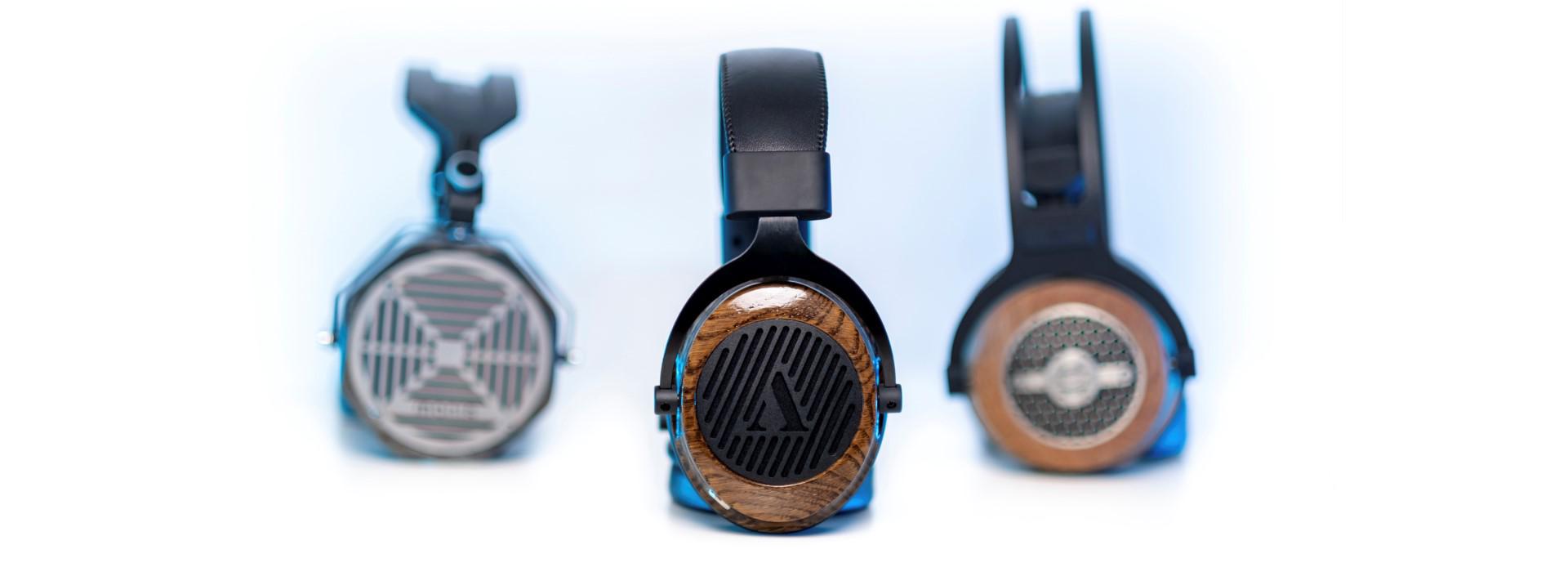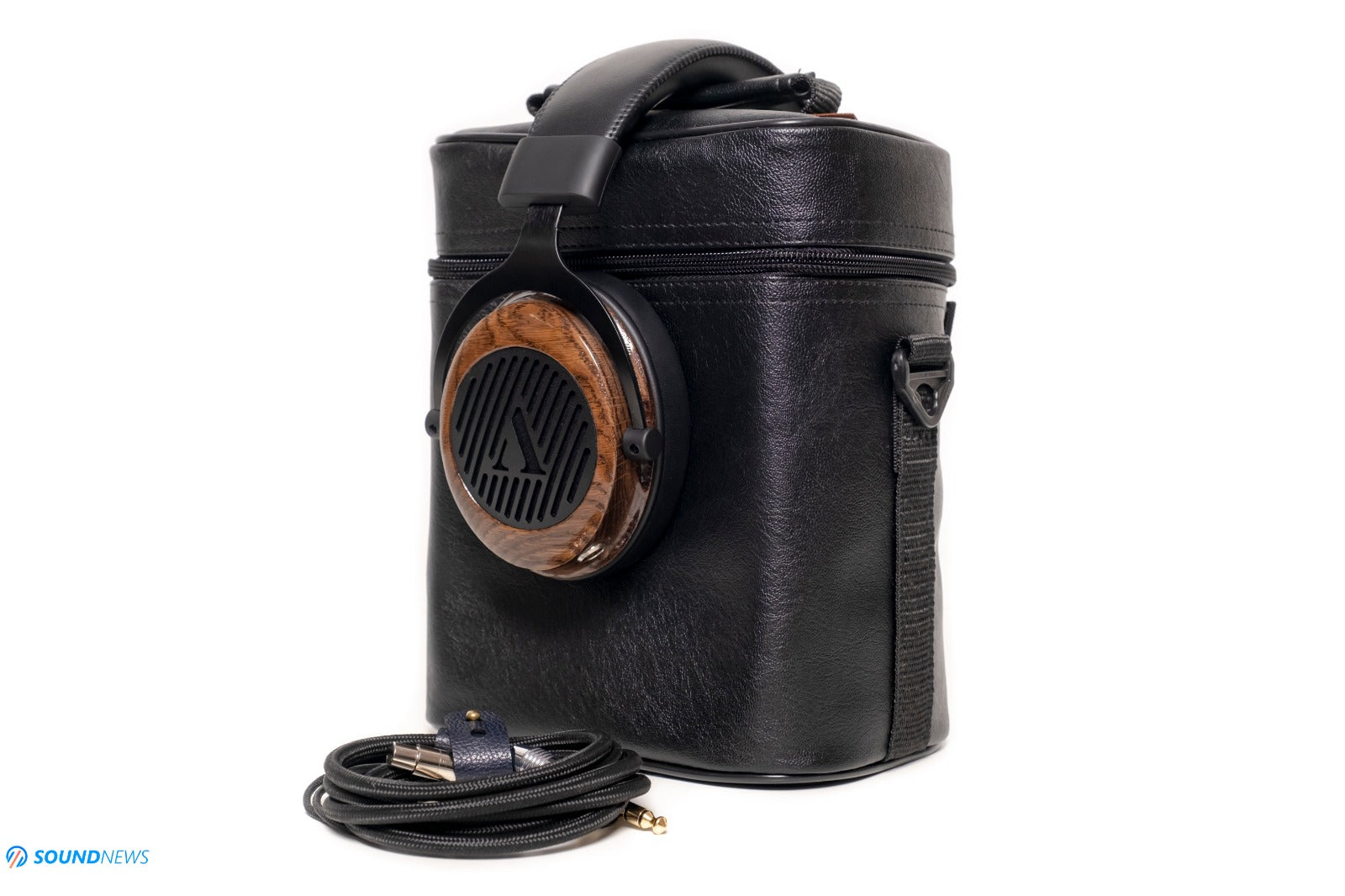This is a product review of the Apos Caspian Open-Back Headphone, which is available for sale now on Apos.
This review is posted here in partnership with Soundnews.net. It was originally written and published by Sandu Vitalie on August 17th, 2021.
My Video Review:
Everything started last year on a Friday evening. While I was enjoying my time in the company of a glass of whisky and some electric blues, I’m getting a call from a good friend asking if it’s possible making a headphone that should be different to anyone else’s, affordable, hand-made, unique sounding and be finished in less than six months. While all that might sound like an easy task, to me it was like climbing Mount Everest bare footed. I didn’t sleep that night…I was thinking how it should look, what materials should be used, what drivers should it have and at what size. I thought deeply about its sensitivity…I have a strong love ’n’ hate relationship with the Hifiman Susvara, which is currently being driven by two power amplifiers. I’ve immediately discarded the idea of making a headphone from scratch, as for something of this caliber two to three years of trial and error would be necessary, on top of that I didn’t have access to a CNC, leather or wood-carving machine, so we needed someone that already has all the necessary tools. The next minute I thought about headphone CEOs that replied to my emails in the last few years. Only some of them did, but one individual stood out from the rest, as chatting with him felt like opening an audiophile encyclopedia. He was passionate with an intense fire burning inside and most importantly he would reply back with care explaining down to the smallest details the story behind each of its own creations. That man is Valentin Kazanzhi of Kennerton Audio and even that Friday night, I already pictured that we are going to make a headphone with Valentin’s team of engineers and craftsmen.
The headphone that I am reviewing today is a love letter to headphone enthusiasts, but also to regular music lovers. With them, you don’t need the biggest and the meanest headphone amplifiers to move their diaphragms, nor do you need an expensive audio source to feel goose-bumps on the outside and butterflies on the inside. It was created to pair nicely with your laptop, smartphone or USB dongle, it was made to resist the test of time and fade away without damaging the environment around us. We used only steel, aluminum, some leather, wood and two little pieces of plastic. I say we, because three distinct teams from three different countries worked closely together in difficult times, creating what came to be the Apos Caspian headphone. It was a challenge making them look and sound the way we wanted, but in the end our goal was achieved.
I’ll try to be as unbiased and as honest as possible, but as you can understand there is some degree of pride and love in creating something that is different, insanely awesome and easy to enjoy even from your phone fully loaded with lossless files. You know, all the latest metal boxes that we’re getting to improve our listening experience, that try to beam our minds into a musical wonderland…aren’t as special as they used to be. Nowadays there is a fierce battle on-going between audio makers, fighting for the lowest numbers when it comes to distortion and for the highest numbers when it comes to dynamic range. I’m okay with that as long as they listen carefully to their gear and make sure the soul of the music is still lingering in there. If a DAC or amplifier measures perfectly, but doesn’t awaken emotions, it will never do justice to the music. There are several audio manufacturers that never listen to their gear in a headphone or stereo setup, as measuring, marketing and releasing their gear is more important than anything else. When making everything ultra-linear, ultra-detailed and straight as a line…sometimes things are lost in transit, music wouldn’t speak, it would feel emotionless and deconstructed into millions of pieces, divided into noises and sounds.
I want to be very clear from the start that Apos Caspian was measured and listened for hundreds of times. I wanted to make sure they would sound engaging out of any setup, be it old or new, affordable or expensive, ultra-linear or colored, bright or warm sounding. Apos Caspian’s journey has just begun.

Unboxing Experience
Caspian is coming in an environmentally friendly package, which houses a high-quality eco-leather shoulder bag. It is the same bag you’ll find with high-end Kennerton headphones. The bag itself is thick, soft to the touch and padded with hardened foam for a good protection. I am not a bag/purse person myself, but I find its build quality and dimensions spot on. Its neither small, nor too big, just perfect to be taken in short or long trips. I’ve used this bag in several city-breaks, as I can fit in there any headphone, a cable and a portable digital audio player. Simply put, this is one of the nicest headphone bags I’ve encountered so far and I wish more headphone companies would use a functional bag, instead of an impractical display case.
After opening the bag, a strong smell of wood, lacquer and leather will be hitting your nostrils. A lot of care went into making this headphone and we made sure it would last a lifetime. Its sound tuning could be debated, but as far as build quality goes…this is a truly marvelous build. Each and every Caspian is hand-crafted and due to the nature of the wooden cups and their unique texture, each unit is one of a kind.
Besides the headphones themselves, you’ll find a high-quality detachable cable in there. My first requirement when we started brainstorming this headphone was going for 3-pin mini-XLR connectors on the headphone cups – since that is the most secure connection with the biggest surface area there is right now and I also wanted a 4-conductor cable for a fully-balanced cable geometry. The cable itself uses high-purity OFC conductors with locking type mini XLR connectors on the headphone end, plus a 6.35mm (1/4”) headphone jack that could be easily replaced at home with a 4-pin XLR jack if you please. We choose thicker conductors and we added a textile jacket on top for extra protection. This cable is free of microphonics and considering its thickness, it should resist at least a few years. I find its stock cable very good, it’s sturdy, flexible, it uses high-quality conductors and, in all honesty, you don’t need any other third-party cable with this particular headphone.
It puts to shame lots of stock cables of many headphone makers with just one or two exceptions. I presume the final packaging will be holding a user manual and a warranty card, but I’m not sure at this point.
Even without listening to them, you can feel all the care that went into making a long-lasting product stored in a well-protected bag. Using some of the highest quality materials and offering the best service, we crafted this headphone by audiophiles for audiophiles.

Build Quality & Looks
Although this is an OEM product, strictly made according to our specifications, one of the first goals was making it look very different to any other Kennerton headphone and the same applies for its sound tuning. This is precisely why we went with a different headband style, different ear-cups, grills, shape and headphone connectors. I do believe we managed to make it look fresh and unique to any other headphone on the market. Caspian was build using only long-lasting materials, we made its structure strong but lightweight, it doesn’t have additional rods and screws for adjustments, making it look sleek, minimalist and futuristic.
At this moment, Caspian ear-cups are made out of aged Oak wood, but who knows…maybe in the future there would be limited runs of different wood types, you never know. Oak is a hardened wood; it isn’t endangered, it doesn’t crack that easily and it has excellent acoustic properties, making it a natural choice for the Caspian.
The headphone structure is made entirely out of metal, that is anodized with a matte black paint – that proved to be strong and resilient. We used a very simple and straightforward headband design, we didn’t have much time to develop our own, so we went with a time-tested configuration. To adjust the headband, you’ll need to gently pull it up to your head size. I’m having a bigger melon and I’m using it at position no.2 out of 8, we made sure that even Megamind and MODOK could use them in their devilish plans. Caspian offers a high comfort for bigger and smaller heads, with little to no side pressure or on top of your head. I believe this is our third headband to which we added some extra-padding, so you can wear it for longer periods of time, without feeling pain or any discomfort. They feel snugly, wrapping your head entirely. Think about Beyerdynamic DT and Sennheiser HD600 line of headphones, but without the huge clamping force.
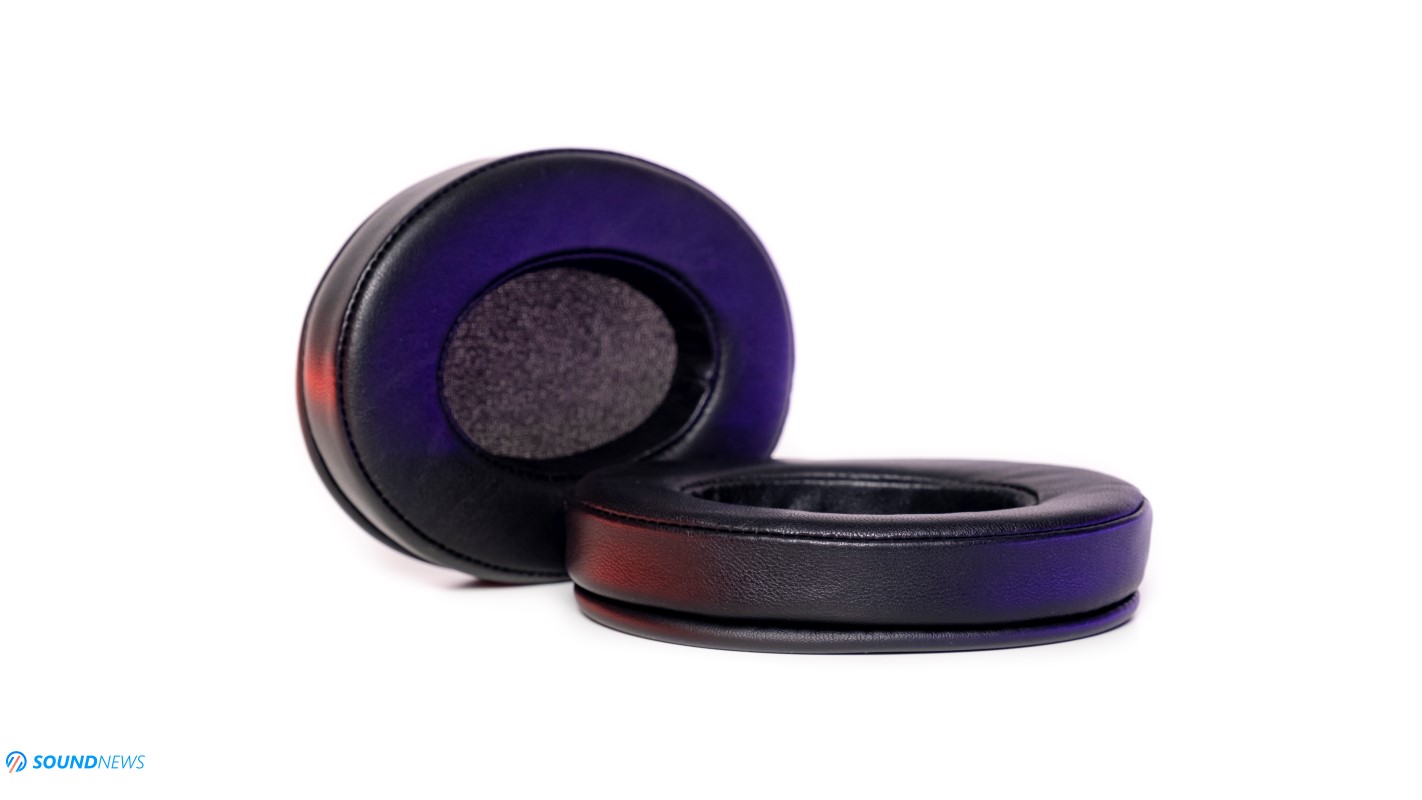
It’s important to mention that its ear-pads are hand-made and hand-stitched, those are made out of real leather. These are high-quality pads that can surpass the quality of many third-party companies that are making ear-pad replacements. They are filled with memory-foam, I find them soft to the touch and since those are made out of real leather, they won’t peel anytime soon.
Caspian weights approximately 380 grams and compared to any other mid-level headphone, it feels feather weight. In terms of build quality and material choices there isn’t much to complain, as we took extra measures for meeting or surpassing your expectations. Overall, I find them lightweight and comfortable enough to be used long term.

Technology Inside
First things first, Caspian is a fully open-back headphone. We wanted to make it sound as big and as open as possible, so we enlarged the ear-cup openings, moving excessive energy behind the driver outside. The cloth that you see behind the metal grill is acoustically transparent, it doesn’t block the air travel and it doesn’t add any coloration to the sound. First prototype didn’t sound as open, so we made the pads a little thicker, adding more space between your ears and headphone drivers. A closed-back headphone was out of the question, but who knows, maybe there would be one in a distant future.
Secondly, Caspian uses custom 50mm graphene-coated composite dynamic drivers that are mechanically decoupled from the wooden housing, to decrease cup vibrations and subsequently lower the THD (Total Harmonic Distortion). This is an extremely thin driver that needs small voltage swings to be moved. A graphene layer was added on top of a composite diaphragm to improve rigidity, lower its distortion, improve its speed and decay and for a better driver control at higher volumes. Graphene is stronger than steel, making it hard to damage, but really easy to move when applying a magnetic force. As a result, the classical mylar based driver is significantly improved, having a much better strength, meaning that a higher SPL can be applied without the fear of damaging it. It was a natural choice and I’m hoping to see it more often, as graphene has great potential when it comes to acoustics.

Caspian also uses an ultra-light aluminum voice coil (CCAW) covered with a thin layer of copper to increase its electric conductivity.
Besides a high-performance driver, a powerful magnetic force will be needed to push it back and forth for a nice impact and that’s why we used a bigger magnet structure compared to its competitors, increasing the magnetic force that is being applied to the driver. All of this combined should offer an impressive dynamic range, a good kick and impact, with minimal loss in terms of details and transparency.
Lastly, we wanted a headphone that is easy to drive, that could be enjoyed without the need of a headphone amplifier. Having an impedance of 32 Ohms and a much higher sensitivity of 115 dB per 1mW of power, you can drive these with pretty much everything that has a headphone jack. Obviously, these would sound better out of dedicated audio sources, small USB dongles and portable audio players would be more than enough.
Okay folks, I’m thirsty for some music so let’s hit some eardrums.
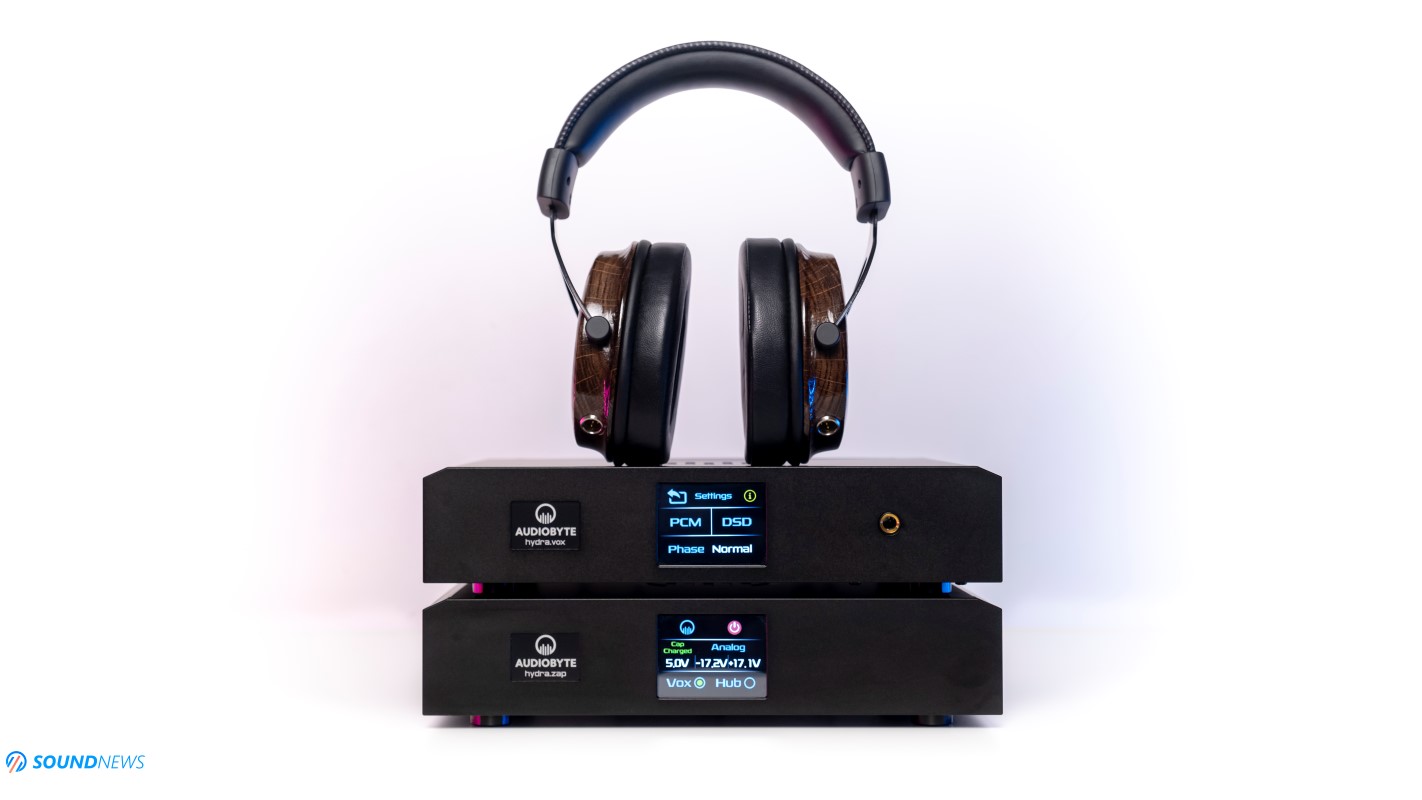
Sound Performance
I. Preliminary Impressions
Seeing so many linear sounding DACs and amplifiers, I wanted to add a sprinkle of fun in this particular model, so we’ve raised its mid-bass and midrange delivery just a little bit, without dropping down its treble output. Caspian has a hefty and visceral bass delivery, that feels clean, controlled and quite punchy. It delivers a life-like midrange performance, adding soul and emotions to your music. It’s clean and extended in the treble without being bothersome in the long run. There is a very gentle roll-off in the most sensitive part of our hearing, it was put there on purpose so you can listen to all your music and movie collection without feeling any physical discomfort. They remind me a little bit of Sennheiser HD600/650 line of headphones, but Caspian is (much) easier to drive, sounds deeper and it has a lower treble roll-off, offering more micro-details and nuances to the listener.
Caspian is fuller-bodied and creamier sounding to your typical headphones, so expect plenty of vocal presence, expect a natural rendition of the musical instruments and a higher degree of details compared to regular mylar or composite driver headphones. With Caspian I didn’t want to overdo things, so all the rises and drops that I’ve mentioned from the frequency response are gentle and subtle. I find them highly entertaining out of all headphone amps: they sound euphonic out of THX, NFCA achromatic amplifiers and very much the same out of transistor-based or tube-based amplifiers.
One of the biggest standouts to me is how natural they are sounding when it comes to note placement around the listener (so called imaging), soundstage and depth. We’ve put the biggest grilles and ear-cup openings, so that Caspian would sound as big and enveloping as possible and while they wouldn’t outperform a high-end pair of planar magnetic headphone, they are coming pretty close when it comes to air traveling around. Caspian is bigger sounding to something like OLLO S4X or Sennheiser HD600 line of headphones and I find them bigger sounding to entry-level planar-magnetics. I’m into all kinds of music, I could start my day with Antonio Vivaldi and finish it with Slayer and everything in between is right up my alley. This is precisely why Caspian was tuned as a daily driver headphone that could work with everything you throw at it. Its gentle and big sounding with classical music, its electric and alive with jazz, thumping and hard slamming with electronica and visceral with rock and metal.
I just returned home from a 10-day vacation, where I could breathe some fresh air, charge my internal batteries and listen to some music alone while watching the dusk with a glass of rose wine. A Shanling UA2 slipped in my pockets that easily connects to any modern smartphone (iOS / Android), transforming into a pocket-friendly audiophile package, delivering enough power and a superior digital to analog conversion. Can you guess which headphone I took with me in this trip? Yep, it was the final version of the beautiful Caspian. With its high sensitivity of 115 dB per 1mW of power, you can drive them with pretty much everything. Heavyweight and kilo-buck amplifiers aren’t really needed and that tiny UA2 worked as a charm with them, as I never went past 55% of volume and with a Tidal Hi-Fi and Qobuz subscription, I was rocking lossless music in the middle of nowhere.
Caspian were developed for a fun, musical experience and not so much for analyzing your music with a magnifying glass. It’s difficult putting a finger on what exactly makes it different, as there is some kind of charm in this one compared to usual dynamic headphones. Some might say it’s the liquidity that bonds all the notes together, others might say it’s the naturalness that Caspian radiates so brightly, but I think that all of the above makes the Caspian stand out from the rest.
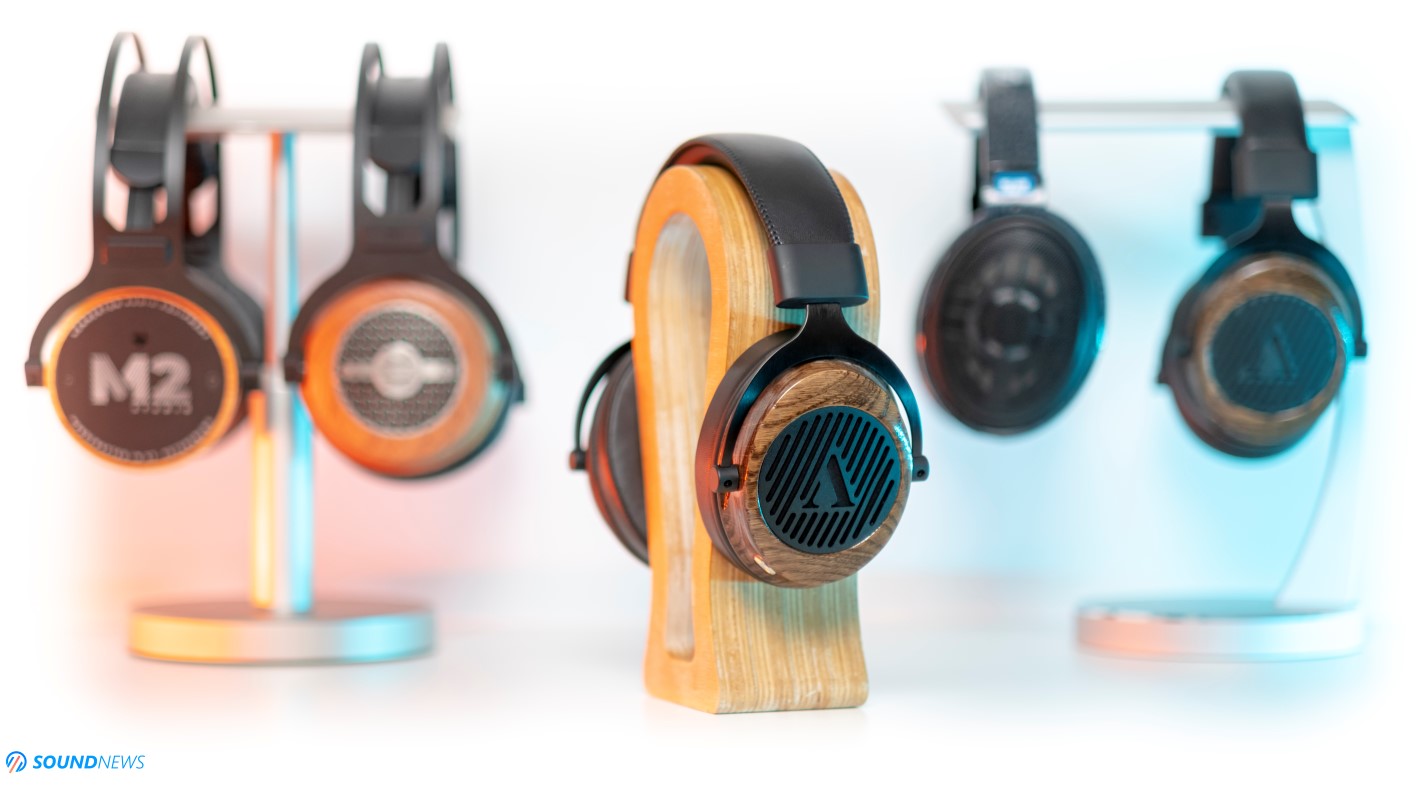
II. Power Requirements
Don’t have a headphone amplifier the size of a fridge, or an oversized portable DAP? No problem! Caspian were made to be enjoyed even out of ordinary headphone jacks. At 115 dB per 1mW power, these are the easiest to drive audiophile-grade desktop headphones I’ve ever used. Sensitivity wise, these are on the same level with portable over-ear headphones like Sennheiser Momentum line or Meze 99 Line of headphones. Their lower impedance, thick leather pads and super-thin diaphragms left a very positive mark on their sensitivity. Caspian doesn’t require gobs of juice; you don’t really need a desktop headphone amplifier to make them jumpy and impactful sounding and this was very important from the start of its development cycle. In a real-life scenario, I always needed to double check the volume of my amplifiers before pressing the play button, as Caspian are becoming loud and quite fast even out of portable sources.
Compared to some of my headphones, they are more efficient by around 10 dB to the Hifiman HE1000SE, by 15 dB to the Hifiman Arya and by around 16 dB to the Audeze LCD-4. Caspian has a loudness gain factor of 3 compared to the last two headphones, sounding 3 times louder at the same output from your amplifier. They need little to no voltage to sound very loud and that my friends is a very big deal!
It can be easily driven by portable USB-C dongles, DAC/Amps and DAPs. I’m glad we managed to make it so sensitive and easy to drive. I tried them with a bunch of amplifiers, ranging from THX and NFCA, to transistor and tube-based, but all that wasn’t necessary as they sounded marvelous even out of tiny little devices. There were signs of a well-driven headphone even out of Shanling UA2, Qudelix 5K and FiiO BTR5, dynamics were impressive, bass impact was there, everything sounded effortless and tightly controlled. Its warmer tonality and its super liquid and easy-going nature worked great with linear and bright setups, complementing each other’s shortcomings.
Always keep that transportable bag close to you, as you can easily carry them to your office and back home, use them in long or short trips, as with Caspian you can fulfill all your Hi-Fi needs straight out of your smartphone or tablet and be extremely happy with the outcome.

III. Transient Response
When it comes to transients, Caspian follows the same road paved by the Kennerton Vali, Magni and Gjallarhorn. It delivers plenty of air in an instant, you can feel the physical manifestation of the low-end, that is impactful and oh so present in my tunes. Yes, my dear music lovers…that was made on purpose. A sprinkle of mid-bass covered the Achilles Heel of all open-back dynamic headphones. Caspian delivers an impactful, visceral bass that always puts a smile on my face. They were speedy sounding from the start, their graphene coating added control and improved their speed and decay. My final wish was a nicer bass slam and that’s exactly what we did with the latest iteration. For me, this chapter is extremely important, I could never enjoy my headphones or loudspeakers if they can’t deliver a proper transient response. I can’t enjoy gentle, mellow dynamics, uncontrolled bass notes and a loose midrange and we made sure this wouldn’t happen to the Caspian.
No matter the headphone rig or the music that is playing, Caspian will be pressing the gas pedal, would add some presence down low, would deliver more air and show you more layers of bass. They kept going and going, keeping up even modern electronica, always challenging my setup and hearing abilities. Putting all the bias aside, I don’t believe there is a more impactful and enjoyable headphone at this price point. A faster headphone? Entry level planar-magnetics could pull that off, but harder slamming and ultimately more engaging sounding? I don’t think so.
I want to be clear that Caspian isn’t boomy sounding, but there is plenty of rumble and immediacy and that adds a nice texture and weight to your music. A good dose of dopamine always rushes into my veins when a faster paced track starts playing with Caspian on my head. I never experienced muddiness, or that they are running out of fuel and dynamics. On the contrary, after a few hours of non-stop action, I needed to take some rest.
Slower paced music worked well too and they were able to brake and slow down a little, making me feel good and comfortable. When some electric blues started playing, I felt energized and reinvigorated. For me, Buddy Guy and Junior Wells are a dream team, they just gel together with the Caspian. I just couldn’t get enough of those gangster Hoodoo Man Blues (Qobuz / Tidal). Caspian bypassed monotony, by adding some of its unique character into the mix, being simultaneously clean and raw sounding. Caspian was able to jam front to back, added plenty of depth to this album. There are several sections where people are jamming and interplaying with each other, and those were my favorite parts with this headphone, since it seriously highlighted the vocals and the musical instruments.
The more I listen to them, the more I am realizing that Caspian is one of the most fun headphones I’ve tested in a long time. They remind me of several headphones, yet none are sounding this life-like and fun.

IV. Soundstage & Depth
While listening to Chitlins Con Carne (Remastered) by Kenny Burrell (Qobuz / Tidal), I grabbed a cigar, as I just couldn’t hold it anymore. Everything felt so cozy, so close and so intimate that the last thing remained to do was just to lean back, relax and have a cigar. While this album is not expanded and wide-open sounding, everything was placed so precisely around me, so layered and well-spaced, adding a lot to the mood of relaxation, transcending the hectic sounds to a different level. This record feels old and new at the same time, it is neither too big, not claustrophobic sounding, just right to be experienced via headphones on a Friday night.
Caspian isn’t sounding massive and larger than life, instead its above decent in this regard, choosing more of a cozy listening experience, feeling each and every note at a greater intensity. I still remember the days when Sennheiser just released their HD650 headphone and everyone hailed it as being a soundstage king versus its life-long nemesis Grado RS-1, which I also owned at that time. I’m still laughing hard because neither are big or wide sounding, compared to both models Caspian is bigger sounding in every way. In all honesty…soundstage is a little exaggerated with headphones. It is an important part with loudspeakers and you can feel that immediately, but with headphones it is more the work of our imagination and alcohol in the bloodstream. With all that said, there are plenty of headphones, even pricier ones that Caspian surpassed as far as soundstage goes.
I remember calling the Kennerton Magni and Gjallarhorn massive sounding to their closed-back nature, obviously Caspian is bigger sounding, it pushes farther away all the notes, offering more order in my music. I can’t call them huge, wide and enveloping, how several high-end open-back headphones would sound, but they are coming pretty darn close. More important than ever, they don’t sound closed-in, cramped and claustrophobic at all. There is always some degree or air traveling around, there is always something to your right, left or even behind your head. Sounds are easily going past my shoulder level and there is plenty of play around my body. I’m not getting the same weird feeling that IEMs are providing, sounds are definitely pushed outside and I’m catching them like butterflies with a net. I’ll be blunt and tell you right away that Caspian wasn’t made to rival headphones as HD800 by Sennheiser or any other top-of-the-line headphones. Caspian is still a $500 headphone and should be treated at such and I do believe it holds up nicely in this department.
While its sound staging capabilities are just good, I find them a lot more interesting when it comes to imaging and depth. The sounds would just appear around me like stars on the night sky, you see them and the next second you don’t. Caspian plays really well with my imagination, placing sounds closer and farther away depending on the track, even putting them in unexpected places like behind your head or at a higher altitude. Caspian plays well on the X and Z axle and not so much on the Y axle (width).

V. Detail Retrieval & Transparency
Caspian has a gentle roll-off somewhere between 4 and 6 kHz, other than that I find them quite extended in the frequency response, without hiding away crucial micro-details from your tunes. I’ve tested this particular driver several times now and I believe it’s a clean sounding diaphragm, without going for a clinical or for an extremely detailed presentation. More than anything, Caspian wants to lift your mood, it wants to be listened for hours, to be moved to your office and back home. It isn’t targeting hardcore headphone enthusiasts; it was made for music lovers more than anything else. You’ll hear small nuances and imperfections from your tunes, skipping over-sharpness or treble ringing. The leading edges aren’t that sharp and the highest octaves aren’t piercing at all, giving an impression that Caspian isn’t a detail-oriented headphone or a super resolving one…and that is all true. These aren’t throwing micro-details at your face and aren’t shoving the upper-treble into your skull so aggressively as others are doing. We’ve balanced the Caspian so it would have the right technicalities, while being enjoyable and easy to drive.
Fear not, this is still an audiophile grade headphone, you’ll hear more nuances compared to a Sennheiser HD650, Meze 99 Classics, there is more detail compared to a HarmonicDyne Zeus and a little bit less compared to a GoldPlanar GL2000 (double sided version). There are still layers and sub-layers of bass, midrange is full-bodied and meaty sounding, without sacrificing too much contour and leading edge. There is plenty of treble presence, there is zing and shimmering when snare drum hits are landing. Hi-hats and cymbals are clear and alive, without causing too much trouble in the long run. To me, Caspian has a decent amount of detail, without transforming into a magnifying glass for your music. In this regard, it’s easily in the same ballpark with headphones at around ~$1K.

VI. Frequency Response
A. Bass
When it comes to bass, I have only words of praise, this is easily their most impressive part. Caspian is a dynamic and open-back headphone and yet it doesn’t lose even a single decibel when it comes to sub-bass definition and energy. Caspian starts strong even from 20 Hz and it slowly receives a small boost. Its low-end is always juicy and impactful, easily reaching the lowest octaves. There is more bass presence, texture, air and impact compared to most kilo-buck headphones and this was made on purpose. We wanted to make it fun and we wanted to ditch the boring Harman curve that sucks out midrange warmth and soul from the music. Caspian delivers clean bass notes that pound impressively and decay naturally. We couldn’t make it faster sounding; it already has one of the strongest Neodymium magnets and a rigid diaphragm and all this combined left a positive mark on its bass performance. Caspian is a big departure even from entry-level planars, there is definitely more air traveling down low, there is more warmth and it doesn’t matter if you’re listening to blues, classical or rock tunes, there would be always plenty of bass lingering around. Its mid-bass is the only part that is elevated by a few dB. Somewhere between 30 and 100 Hz the whole area is lifted by 3 to 5 dB, it isn’t much, but enough to add some fun factor and make you move to the rhythm of the music. To me, Caspian is slightly more impressive when it comes to quantity and less so when it comes to bass quality, but fear not, you’ll never experience a muddy or a boomy bass performance.

B. Midrange
If you closely tune your dynamic headphones the right way and discard that Harman curve, then you can make them great in here too. Why would you choose that curve that kills the soul of the music? Most of the sounds that we hear in our daily life happens in the midrange region and when you lower that energy down, you are making things fake and unnatural sounding. Caspian doesn’t have any of that. It is full of life, it is straight as a line in here, vocal performance is mesmerizing, always putting a smile on my face. Musical instruments sound full and extremely textured, there is more positive energy emanating from violins, guitars, pipes, pianos, everything is slightly more contoured and outlined. Caspian adds plenty of weight in here and you can strongly feel that even from the first minutes of play. Think about an Audeze LCD-2 OG that traded planar drivers with dynamic ones…Caspian is like that and a little different. Midrange is highlighted and radiates when acoustic music starts playing. Come Let Go (Live) by Xavier Rudd (Qobuz / Tidal) was such a magical experience with them…I just closed my eyes and went with the flow. Words are unnecessary with such tracks, just feel every beat of the music and sing it with the crowd. Caspian was made for tracks like these, putting goose bumps and reminding once again that we are doing this for the love of music!
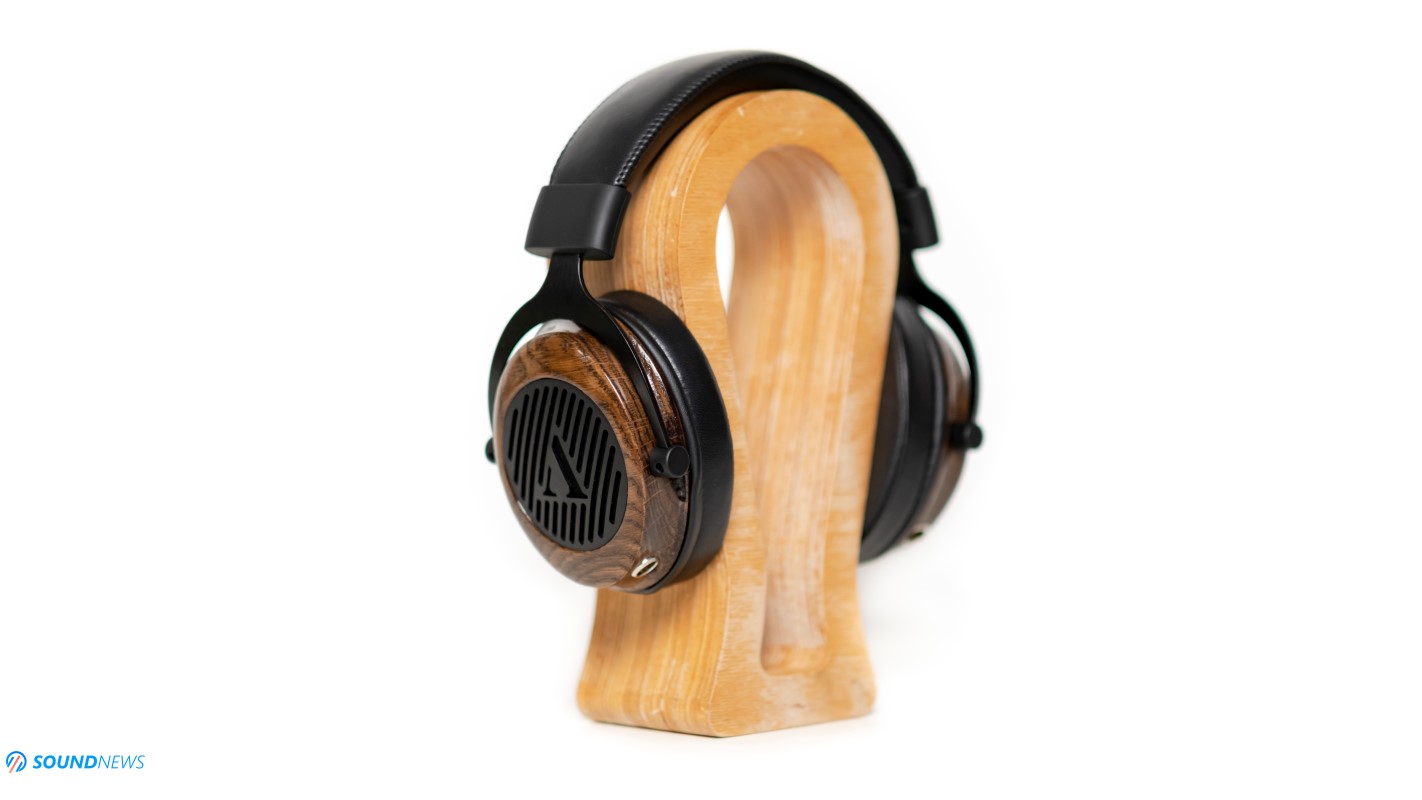
C. Treble
In the latest parts of the development cycle, we’ve raised its treble output by 3dB compared to its first prototypes. I didn’t want to sacrifice details and all the information happening in this region. Its very important to mention, that I didn’t want to raise it up from linearity. It is still on the same level with midrange and sub-bass, it wasn’t overdone, it is just there in right doses. I dislike V-shaped tunings, I want everything on the plate and hear the frequency response in full and we tried to make them as honest and as extended as possible, given the time frame and budget allocated for this model. From 4 to 6 kHz there is gentle roll-off that deletes listening fatigue out of existence, making Caspian one of the easiest to listen headphones on the market. You can hear the upper treble and top-octave clean and defined, but you will never experience piercing trebles and clenched fists. Caspian is gentle when it comes to treble output, you hear it loud and clear, but it’s never bothering. On linear and bright setups, you can make them even more extended and crisper sounding, but you’ll never make them shrill and fatiguing sounding, no matter how hard you try. I went through plenty of rock, jazz and blues albums, I’ve tried them out of many amplifiers and DACs and they always had something to say, showing their charisma and distinct sound tuning. It is surely not for everyone, but those who enjoy a wide variety of music as I do, could see the true potential of the Caspian. It became my daily driver when chilling around, watching movies or multitasking.
Overall, I would describe it as organic sounding, fully preserving the soul of the music, adding some warmth where there isn’t, adding weight and meaning to your music, it’s life-like and never blunt or dull sounding, and that is all you need to know about them.
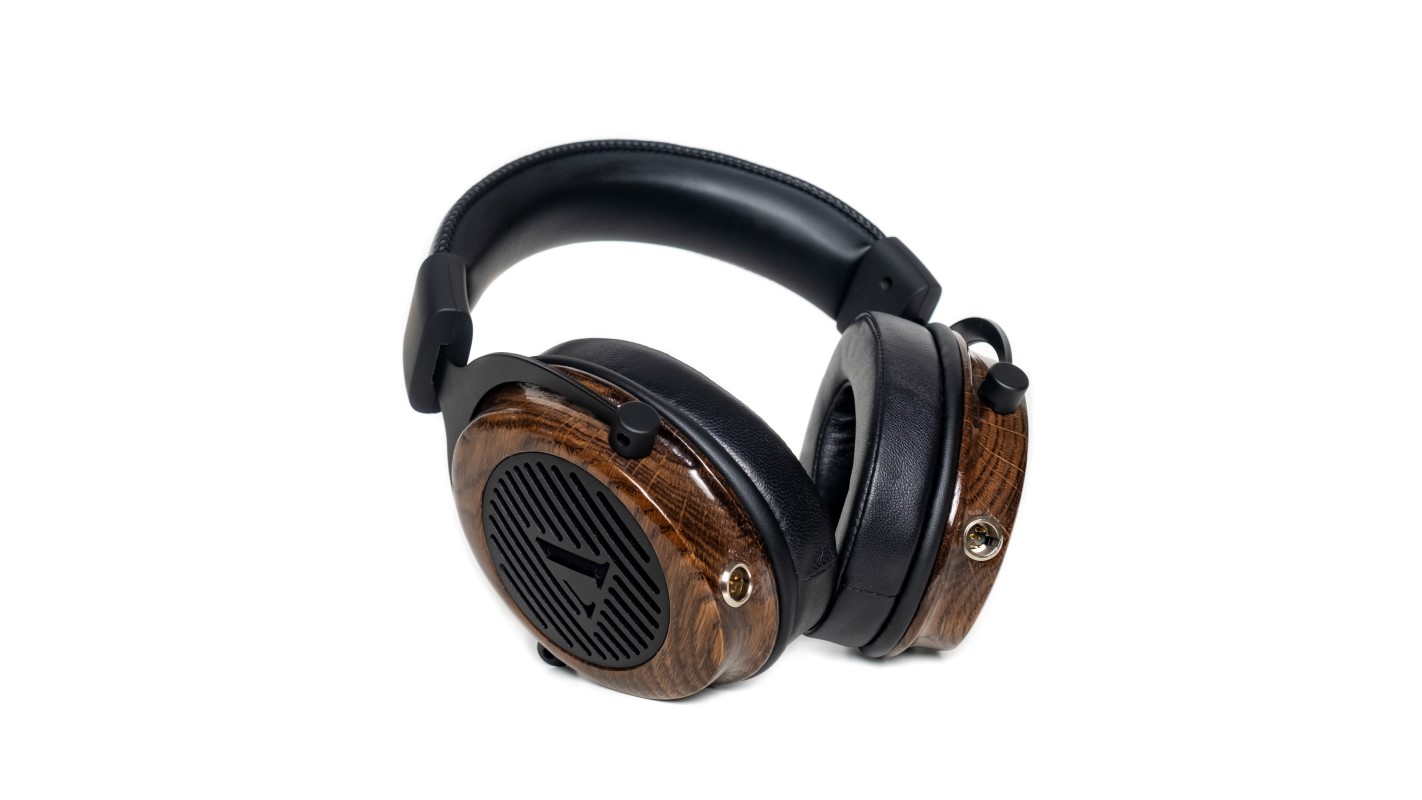
VII. Measurements
After offering my full-blown subjective opinion, it is time to put them under a magnifying glass. When it comes to measurements, I have the highest confidence in the Benchmark HPA4 as it is as linear as headphone amplifiers could ever be and I have resumed at using the Matrix Audio Element X as the main DAC for the job. The measurement rig used was the MiniDSP EARS calibrated with HPN (Original Headphone Compensation) files. Do note that MiniDSP EARS is not following any IEC standards, meaning that my readings can’t be used as reference measurements or anything like that, I’m doing them only to get a general idea about their sound signature.
I have measured them several times, as finding the perfect spot on the test jig wasn’t that easy. No side-pressure was applied on the ear-cups, they stood still in their natural position and I’ve measured them several times before both channels were matched at less than 0.5 dB.

Take a look at their beautiful RAW measurements without any smoothing applied. I’m beyond impressed by the driver matching! There aren’t nasty deviations, both drivers are looking like twin brothers. Most dynamic driver headphones have worse to much worse driver matching. Even high-end planar-magnetics aren’t looking this good.
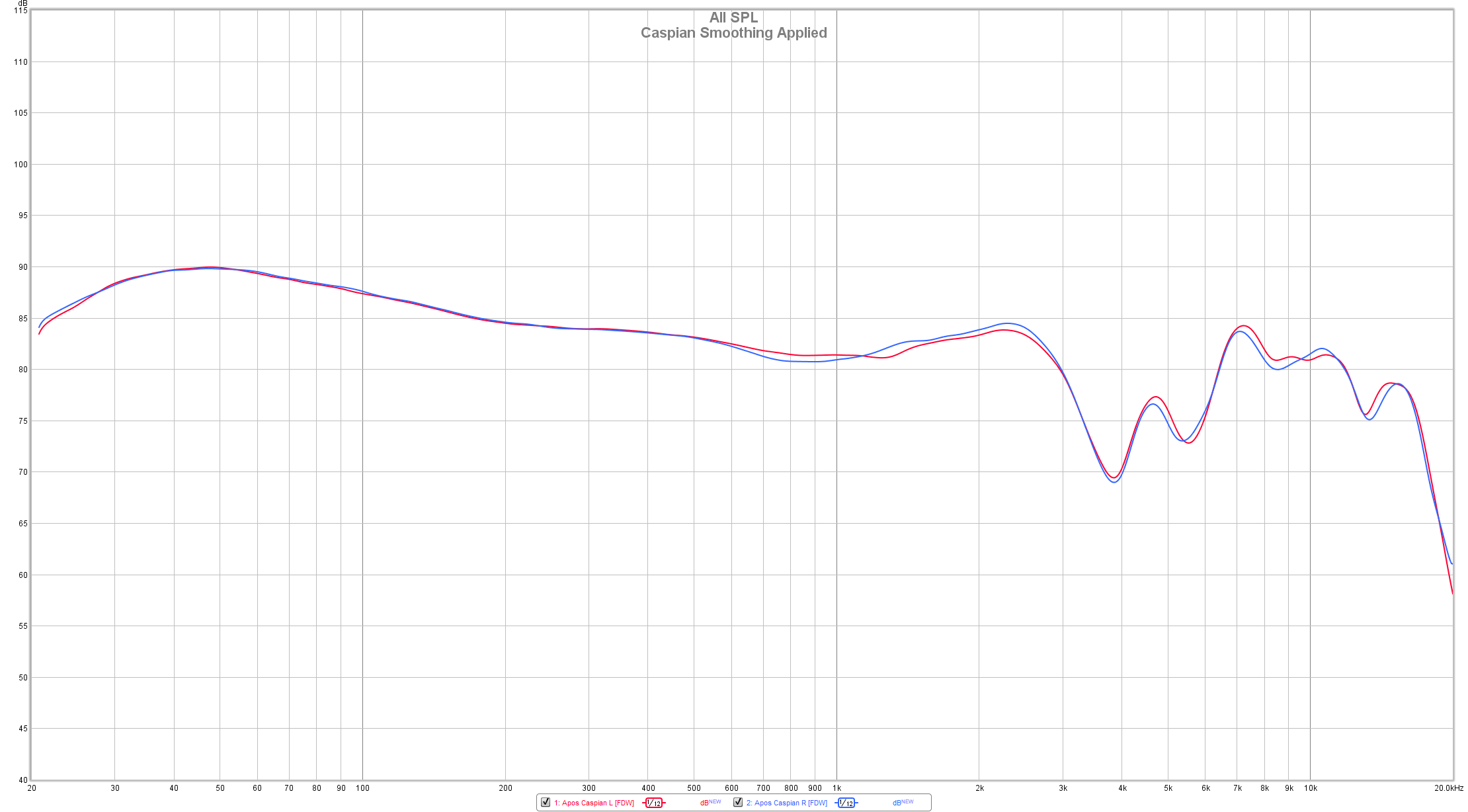
Applying a 1⁄12 smoothing, I am getting this graph and as you can see Caspian is very impressive in the sub-bass, as it doesn’t lose any energy in there. I’ve sent an 84 dB test tone and the sub-bass starts exactly from that region. Mid-bass is slightly elevated by up to 5dB that adds some character and fun into the mix. Midrange looks good, dropping just 3 dB in the upper region. There is a slope in the treble and it looks quite big, that’s because I’ve zoomed a lot and all my future measurements will be recorded between 40 and 115 dB. As I’ve wrote you before, there is a roll-off between 4 and 6 kHz that scares away brightness and listening fatigue for good. The rest of the treble looks good, it is quite linear and there is plenty of presence even past top octave. As you can clearly see, Caspian was tuned for long listening sessions, highlighting bass and midrange region and dropping down small portions of the treble, it was made to sound natural and fun without causing any discomfort.

Considering we are dealing with a dynamic driver, an overall THD of 0.3% is quite impressive. Usually, it stays at 0.5% and sometime much higher. There is a slightly higher distortion in the sub-bass, but at 2% I wouldn’t worry that much. Grado headphones easily reach 15-20% in here, so this is still an impressive result.

Spectral decay looks good, after sending a 300 Hz sweep tone at 84 dB, it drops to 28.8 dB after a short time frame of 160ms, strengthening my claims that this is quite a fast and impactful diaphragm. Sure, there are faster sounding headphones out there, but probably not at this price point. Decay is quite impressive, easily rivaling even entry to mid-level planars.
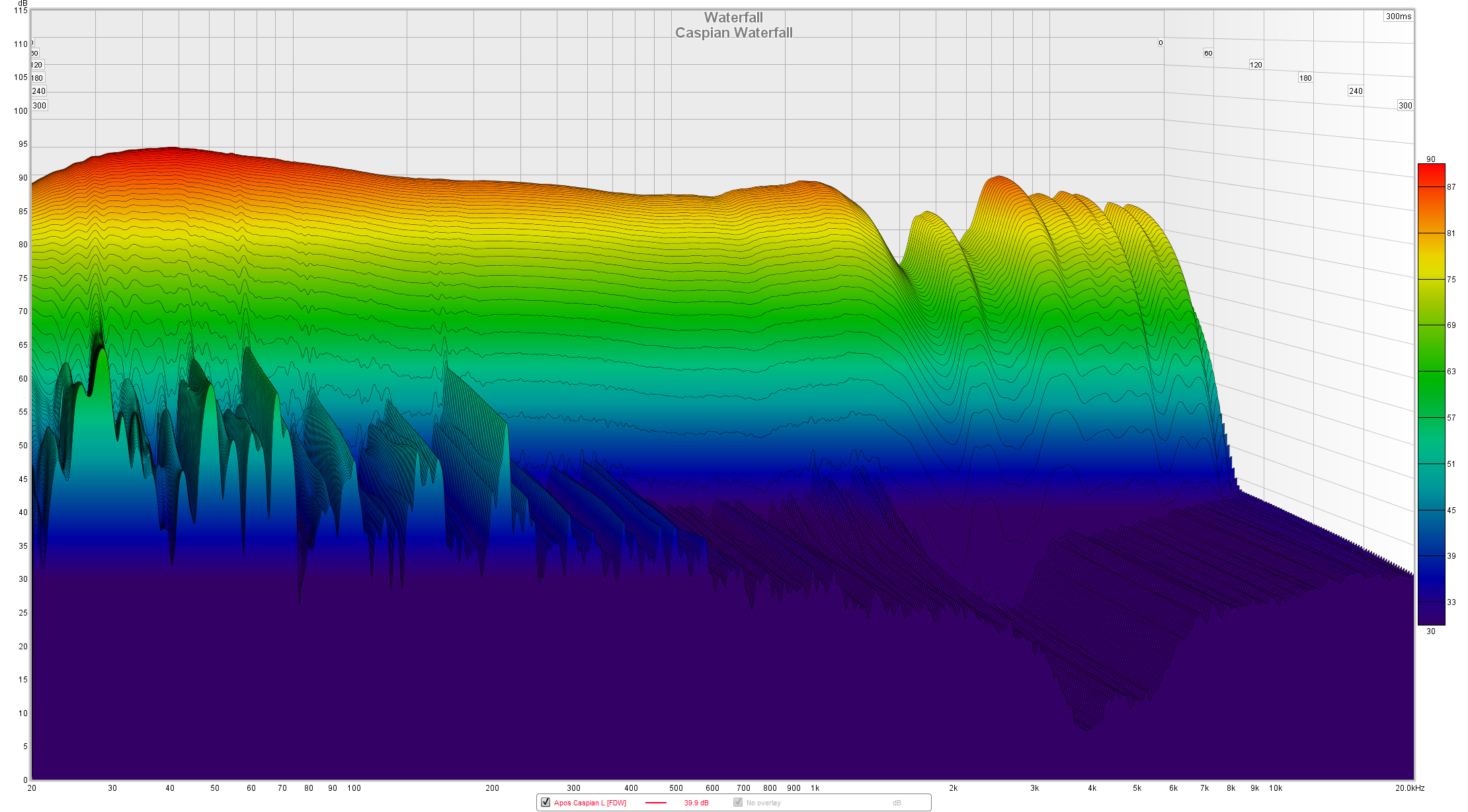
Waterfall combines the FR plot and decay into a single graph, you can clearly see the hot spots in the FR and the slower driver movement in the bass, but that’s normal behavior.

Spectrogram shows a minimal ringing of the diaphragm/ear-cups in the 30 Hz region, which is difficult to tame in an open-back design. Apart from that, the drivers are perfectly controlled thorough the entire FR.
Overall, I have recorded a flawless driver matching, an impressively low THD, a fast start and stop of the drivers and a minimal ringing of the ear-cups. It’s slightly uneven in the FR, but that was made on purpose. These are some impressive measurements by my standards.
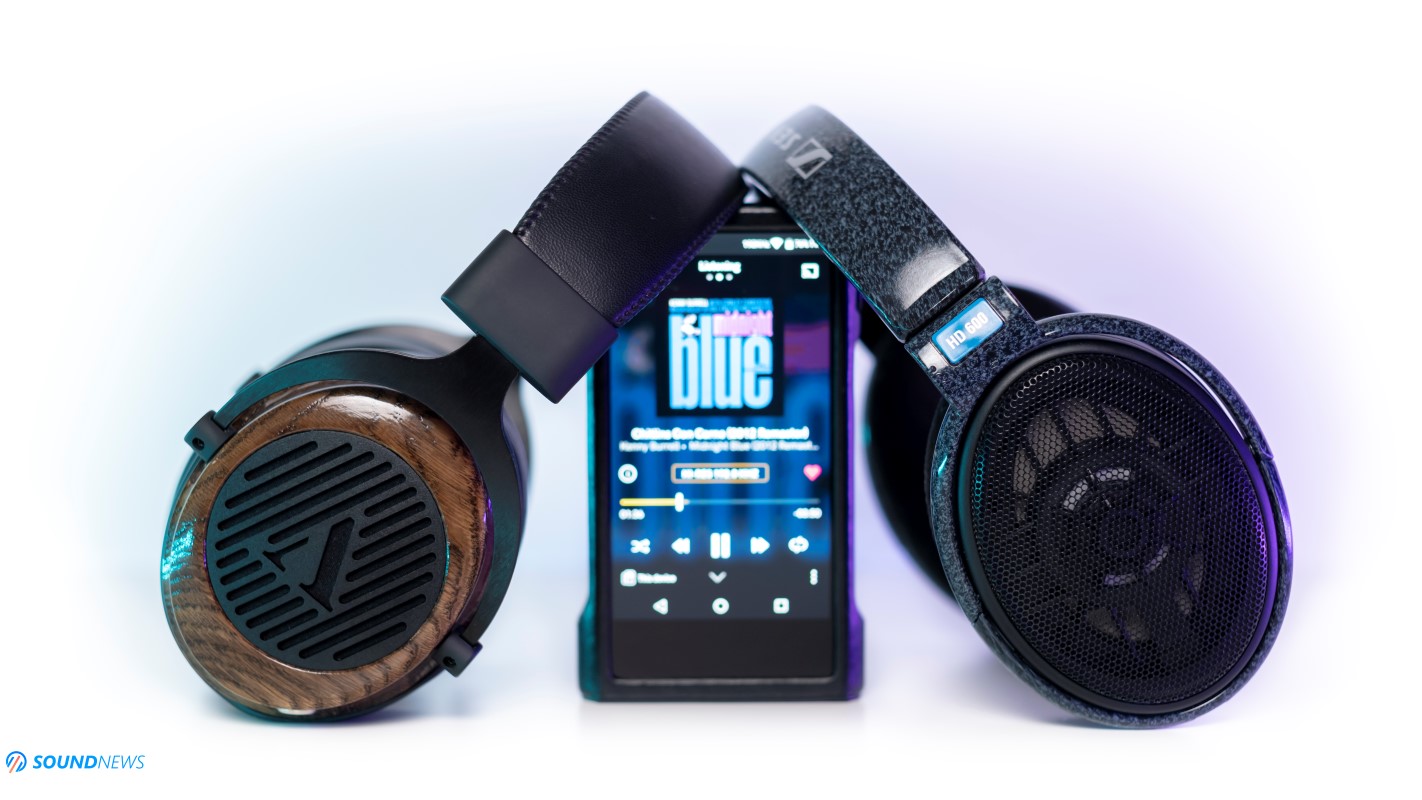
VIII. A Comparison
Apos Caspian ($500) VS Sennheiser HD600 Newest Revision ($400)
When it comes to looks, material choices and build quality, Caspian destroys the HD600 without rights to an appeal. We are talking about a full metal frame supporting wooden cups that are covered with leather ear-pads. HD600 is fully plastic with a lighter metal frame. HD600 looks and feels a bit cheap by comparison, while Caspian radiates uniqueness and style.
When it comes to comfort, if I’m not bending the HD600 headband, then they are losing the game once again. HD600 have a higher clamping force around my ears and there is more pressure on top of my head. Caspian don’t clamp and there is little to no pressure on top of my head, I can wear them for a few hours no problem, while HD600 are becoming bothersome after an hour of use. Caspian scores another point.
When it comes to packaging, you are getting a very basic rubberized cable and a card-board display case with HD600, while Caspian offers are custom-grade cable, that is thicker, uses higher quality conductors and connectors. On top of that you are getting a fully functional eco-leather case and Caspian touches down an additional point.
When it comes to sensitivity what was 70 out of 100 on a Shanling M8 DAP, was 90 on the HD600. Caspian are much, much easier to drive and you should always double-check your volume level before pressing the play button with the Caspian. You need a dedicated headphone amplifier with HD600 and you don’t with the other one, the difference is huge and Caspian scores another winning point.
From this point onward, I volume matched both at the listening level of 90 dB and commenced a long listening session.
The first thing that hit my eardrums was the slight difference in resolution. With HD600 something was always missing from my music. There were good sounding and quite engaging I must add, but they were not great sounding. The notorious Sennheiser veil was in place and nothing could be done about it, the upper treble felt nice but it lacked resolution and inner detail. Caspian didn’t feel like a massive improvement, but there were still small pockets of air and resolution added on top. There was more zing the in the upper treble and additional layers of bass were traveling around. It is a more complete experience with Caspian, they offer slightly more resolution and that’s why these are scoring another point.
When it comes to sound staging capabilities, they are different sounding by a little bit. There is more depth with Caspian, but a taller stage with the HD600. There is more air traveling around with Caspian, but there is a cozier presentation with HD600. One might like the former, while others might prefer the later. I’m giving a point to HD600 thanks to a taller stage.
When it comes to frequency response, HD600 is more linear that is for sure, with it nothing stands out too much. They are slightly reserved then it comes to fun factor, I find them enjoyable only out of several headphone setups. Caspian is boosting the bass and midrange, so everything that has to do with those regions felt richer and more colorful. There is more meat to the bone, more bass impact and a fuller midrange performance. HD600 were fine in here, but Caspian feels like an obvious improvement, hence winning another round.
Treble output is quite similar. While Caspian delivers a nicer upper treble performance, HD600 was able to deliver a nicer lower treble – which is more impressive considering our hearing abilities. Since we are hearing much better up until 10 kHz than past that point, I’m going to give a point to the HD600, a job well done in here.
Transients are faster and more impactful on the Caspian, HD600 was never impressive in this department, I personally don’t enjoy them as much with my electronica tunes as I am enjoying the Caspian. There is more thump and kick with the later, while HD600 is gentler and easier on the ear. Both can sound slow, smooth and mellow, but only one can rock-out and raise those horns high. Caspian rocks another point.
Both headphones are going towards the same tonality, but where HD600 offered a solid 8 out of 10, Caspian offered a 9 out of 10. I’m mostly about their bass and midrange performance that feels richer and meatier on the Caspian. If you love your midrange presence and vocal performance of the HD600, wait until you hear that on Caspian. The later one is definitely warmer and less neutral, while HD600 shoots for a more honest and linear sound signature. It really depends on the individual, but Caspian works with a wider variety of music and audio gear. This is another draw.
In the end Sennheiser HD600 scored 2 points and Apos Caspian outplayed them with 7 points. This doesn’t mean the Apos Caspian is on a whole new level, but I see them as a potential upgrade, especially if you don’t own some expensive DACs and amps. HD600 is still an outstanding headphone, one of the best at less than $500, but Caspian is easier to enjoy, easier to pair and will last you a lifetime. Caspian is more technical, faster sounding, harder slamming and ultimately more fun, at least for me.
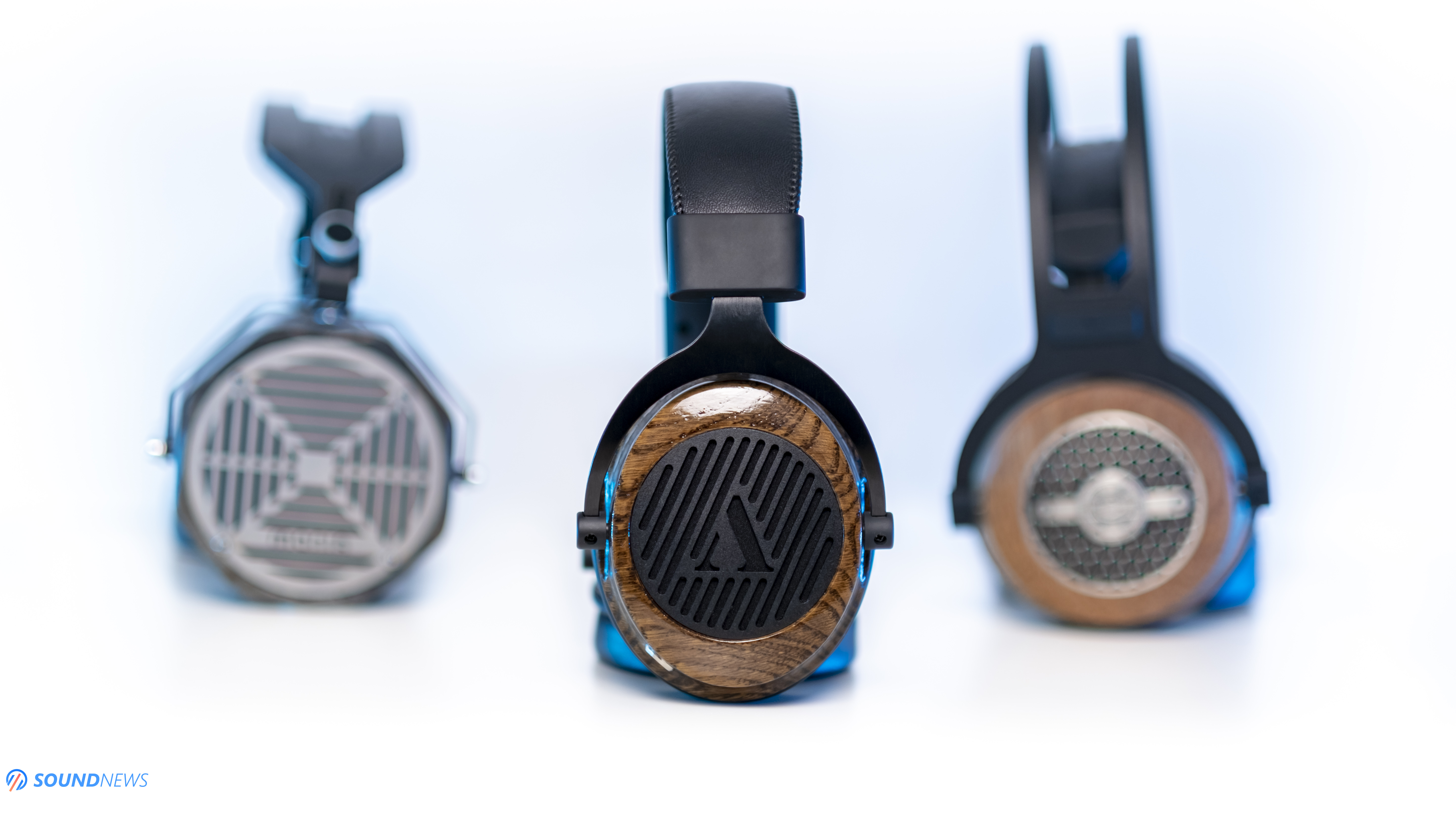
Conclusion
I’m a little sad that my Apos Caspian story comes to an end, but their life cycle just begun and hopefully you’ll try them someday. There aren’t that many audiophile-worthy headphones in the $500 to $1000 price bracket and this is where Caspian fits in like a glove. It can serve as an upgrade path to your entry to mid-level headphones, until you declare war to your wallet and go the high-end route. Caspian was never designed to be linear and straight as a line when it comes to frequency response, we wanted to offer you a relaxed and joyful listening experience, without strangling you to an office filled with expensive, heavy-duty desktop equipment. I challenge you finding a more sensitive audiophile-grade desktop headphone that provides the same acoustic properties and the same long-lasting build quality.
For me, Caspian checks too many boxes, they are small and lightweight enough and starting with today I’ll be using them as my daily drivers. As a member of the development team, please take my impressions with a pinch of salt, but do also note that measurements are strengthening my subjective impressions. Look closer, those are some drool-worthy measurements.
PROS:
- Outstanding build quality, made out of long-lasting materials
- You are getting a one-of-a-kind, hand-crafted headphone
- Some well-thought accessories can be found in its package
- Super easy to drive thanks to its extremely high sensitivity, headphone amp-less listeners rejoice!
- Lightweight and highly comfortable in the long
- Rich, full-bodied and warm sounding, going towards a fun musical experience
- Lots of naturalness and midrange presence can be found in this one, challenging even pricier headphones
- Precise imaging and a decent soundstage level
- Resolving and clean sounding for the price
- Impressive dynamics, they can kick and slam
- Fast transients and decay
- Extended frequency response at both ends
- Outstanding measurements
- Unbeatable price to performance ratio
CONS:
- Limited in the low to mid-treble region
- Soundstage could be wider
ASSOCIATED EQUIPMENT:
- DACs: Rockna Wavelight, Audiobyte HydraVox & HydraZap, Musician Aquarius, Matrix Audio Element X, Gold Note DS-10 Plus & PSU-10 Evo, Gustard X26 PRO, X16, Topping D90SE, SMSL D1SE
- DAPs: FiiO M11 Plus LTD, M15, Shanling M8, M6 (21), M3X
- Headphone Amps: Benchmark HPA4, Singxer SA-1, Flux Lab Acoustics Volot, FA-10, Burson Soloist 3X, Musician Andromeda, SMSL SP400, Topping A90, Gustard H16 & others
- Preamps: Benchmark HPA4, Topping PRE90
- Power Amps: Benchmark AHB2 in bridged mode (x2), KECES S300, SMSL SA400
- Loudspeakers: KEF Reference 3, Natural Sound NS-17
- IEMs: FiiO FA9, FH7, FH5S, FD5, Meze Rai Penta, Rai Solo, LittleDot Cu KIS, Hiby Crystal 6 & others
- Portable headphones: Sennheiser Momentum 2, Meze 99 Classics
- Full-sized headphones: Apos Caspian, Hifiman Susvara, HE1000SE, Arya, HE400SE, Audeze LCD-4, Erzetich Phobos, Erzetich Mania, Kennerton Wodan, Magni, Gjallarhorn, Vali, M12S, Ollo S4X Reference, Sendy AIVA & others
- Interconnects: QED Reference (x2), Topping TCX1 (x2)
- Speaker cables: Kimber PR8, Audioquest Type4
- Power Cables: Isotek EVO3 Premier (x3)
- Balanced Isolation Power Conditioners: PLiXiR Elite BAC1500, Elite BAC400


